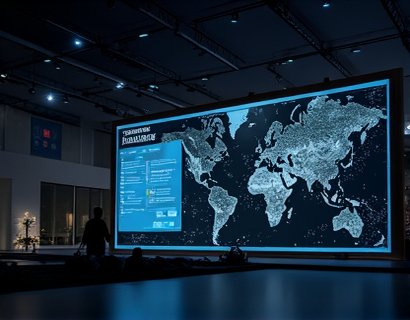Streamlining Web Development with Custom Placeholder Code Generators
In the fast-paced world of web development, efficiency and productivity are paramount. One innovative solution that has gained traction among developers, designers, and business owners is the custom placeholder code generator. This tool is designed to save time, enhance efficiency, and create professional, visually appealing content with minimal effort. This comprehensive guide delves into the benefits and functionalities of custom placeholder code generators, providing valuable insights for web developers, digital agencies, tech startups, and e-commerce businesses aiming to optimize their online presence and projects.
Understanding Placeholder Code
Placeholder code refers to the temporary content used in website design and development to simulate the final product's structure and layout. This content, often in the form of dummy text, images, and interactive elements, serves as a blueprint for the actual content that will be inserted later. The primary purpose of placeholder code is to allow developers and designers to focus on the design and functionality of a website without getting bogged down by the content creation process.
Benefits of Using a Custom Placeholder Code Generator
Utilizing a custom placeholder code generator offers numerous advantages. Firstly, it significantly reduces the time required to set up a project's initial structure. Instead of manually creating dummy content, developers can generate it with a few clicks, allowing them to move swiftly to the next stages of development. This time-saving feature is particularly beneficial for teams working on multiple projects simultaneously or under tight deadlines.
Secondly, custom placeholder code generators enhance efficiency by providing a consistent and professional look to the website during the development phase. The generated placeholders can mimic the final design, complete with typography, color schemes, and layout structures. This consistency helps in maintaining a cohesive visual identity and allows stakeholders to visualize the end product more accurately.
Customizable Templates for Diverse Needs
One of the most compelling features of custom placeholder code generators is their ability to offer customizable templates. These templates can be tailored to suit various project requirements, industries, and design preferences. For instance, a tech startup may require a minimalist and modern design, while a retail business might need a more vibrant and engaging layout. Customizable templates ensure that the placeholder content aligns with the brand's identity and the project's goals.
The customization options typically include choices for text style, color, font, image placeholders, and even interactive elements like buttons and forms. This level of customization ensures that the placeholder content is not only visually appealing but also functional, providing a realistic preview of the final website.
Enhancing Collaboration and Communication
Placeholder code generators play a crucial role in enhancing collaboration and communication among team members. Designers can share the generated placeholders with developers, ensuring that everyone is on the same page regarding the design specifications. This seamless handoff reduces misunderstandings and miscommunications, leading to a more streamlined development process.
Moreover, stakeholders such as business owners and clients can review the placeholder content early in the development cycle, providing valuable feedback and making necessary adjustments. This early involvement helps in aligning the final product with the client's expectations, reducing the risk of major revisions later on.
Time and Cost Efficiency
By automating the creation of placeholder content, these generators significantly reduce the time and cost associated with web development. Developers can focus on coding and implementing the actual content and features, knowing that the foundation is already set up. This division of labor leads to faster project completion and lower overall costs, making it an attractive solution for businesses of all sizes.
For digital agencies and freelancers, the ability to quickly generate placeholder content means they can take on more projects without compromising on quality. This increased capacity can lead to higher revenue and a stronger market presence.
Tools and Features of a Robust Placeholder Code Generator
A robust placeholder code generator should offer a range of features to cater to diverse needs. Here are some key features to look for:
- Template Library: A comprehensive library of pre-designed templates for various industries and use cases.
- Customization Options: Extensive options to customize text, colors, fonts, and layouts to match the brand and project requirements.
- Interactive Elements: Ability to include interactive elements such as buttons, forms, and navigation menus.
- Responsive Design: Generated placeholders should be responsive, ensuring a consistent look across different devices and screen sizes.
- Export Options: Options to export the placeholder code in various formats, such as HTML, CSS, and JavaScript files.
- User-Friendly Interface: An intuitive interface that requires minimal technical knowledge to use effectively.
These features collectively ensure that the placeholder code generator is versatile, efficient, and user-friendly, making it an indispensable tool for modern web development.
Use Cases and Applications
The applications of placeholder code generators are vast and varied. Here are some specific use cases:
Web Development Projects
For web development projects, placeholder code generators can be used to create a functional prototype quickly. This prototype can be shared with clients for feedback, allowing for iterative improvements before the actual content is implemented.
Design Mockups
Web and UI/UX designers can utilize these generators to create detailed mockups of their designs. The generated placeholders can be used to present the design to clients or stakeholders, facilitating better communication and understanding of the proposed design.
E-commerce Platforms
E-commerce businesses can use placeholder code to set up product pages, category layouts, and shopping cart interfaces. This allows for a realistic preview of the online store, helping in the final design and functionality adjustments.
Marketing Campaigns
Marketing professionals can leverage placeholder code to create landing pages and promotional sites quickly. These sites can be used for A/B testing, gathering user feedback, or as part of a broader marketing strategy.
Integration with Other Tools and Platforms
A modern placeholder code generator should integrate seamlessly with other development tools and platforms. This integration enhances the overall workflow and productivity. For example:
- Design Tools: Integration with design software like Adobe XD, Sketch, and Figma allows designers to export design assets directly into the placeholder generator.
- Version Control Systems: Compatibility with Git and other version control systems ensures that placeholder code can be versioned and tracked alongside other project files.
- Content Management Systems (CMS): Integration with CMS platforms like WordPress, Drupal, and Joomla enables the generation of placeholder content that is ready to be populated with actual content once it's available.
These integrations streamline the development process, reducing the need for manual transfers and ensuring consistency across different tools and platforms.
Best Practices for Using Placeholder Code Generators
To maximize the benefits of a placeholder code generator, follow these best practices:
1. Plan Ahead: Define the project's scope and requirements before using the generator to ensure the placeholders align with the final goals.
2. Use High-Quality Templates: Select templates that are well-designed and relevant to your project to maintain a professional look.
3. Customize Thoroughly: Take the time to customize the placeholders to reflect the brand's identity and the project's unique features.
4. Test Responsiveness: Ensure that the placeholders are responsive and look good on all devices to maintain consistency across platforms.
5. Collaborate Effectively: Share the placeholders with team members and stakeholders early in the process to gather feedback and make necessary adjustments.
Conclusion
Custom placeholder code generators are powerful tools that can significantly streamline the web development process. By providing efficient, customizable, and professional placeholder content, these generators help developers, designers, and business owners save time, enhance collaboration, and create visually appealing websites. Whether you are working on a small project or managing a large-scale e-commerce platform, incorporating a placeholder code generator into your workflow can lead to more successful and timely project completions.











































